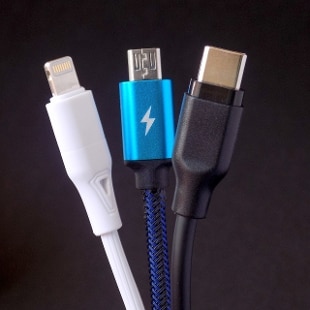Share
23 September 2021 The European Commission has proposed a new directive that will impose a
single standardized charging solution
for all smartphones and other electronic devices (tablets, digital cameras, headphones, earphones, portable video game consoles and portable speakers), ensuring their interoperability with external power supplies.
The
USB-C ports
have been chosen as the standard format for all devices concerned. Consumers will thus be able to charge their devices with the same charger, regardless of brand.
Technologies and
speed of fast charging
will also be harmonized
, and consumers will be offered the possibility of
choose whether to buy
a new electronic device with or without a new charger. Consumers will need to be informed about the characteristics and charging performance of electronic devices.
The Commission, recalls a note from Brussels, has supported a standardized charging solution for mobile phones and similar electronic devices since 2009, when it promoted a voluntary sector-wide agreement that led to the adoption of a first memorandum of understanding, with which the number of charging solutions available on the market increased from thirty to three.
The memorandum of understanding
expired in 2014
after two renewal letters. A new agreement proposed by the sector in 2018 did not meet the expectations of the Commission or even those of EU consumers, as it would not have made a standardized charging solution possible.
The Commission therefore decided to take a
legislative approach
and proposed the directive today. The standardized solution and the fact that smartphones will no longer have to be sold with a charger will contribute, according to the EU Executive, to the
reuse of charging devices
and will help consumers
save 250 million euros a
year.
The separate sale of the external power supply will also reduce the extraction of
raw materials
required for battery chargers as well as their manufacture, transport, use and disposal. Electronic waste will therefore be reduced by approximately 1,000 tons per year, with a decrease in greenhouse gas emissions by approximately 180,000 tons of CO2 per year.
The Commission proposal does not set technical requirements on wireless charging devices, a technology still under development, in order to make innovation possible in this area. Manufacturers will therefore remain free to include in their products
any
wireless charging
solution
in addition to the charging solution via the USB-C port.
Last year, the Commission recalls, some
420 million
mobile phones and other portable electronic devices
were sold in the European Union
. On average, a consumer owns about
three
cell phone chargers and uses two regularly. 38% of consumers said they had difficulty charging their mobile phone at least once because the available chargers were incompatible.
Consumers spend around
2.4 billion euros a year
to purchase separate chargers not included in the purchase of their electronic devices.
The proposed directive will now have to be adopted by the European Parliament and the EU Council according to the ordinary legislative procedure (co-decision).
A
transitional period of 24 months
from the date of adoption will give industry ample time to adapt to the new requirements before they come into application, i.e. no earlier than 2024.

